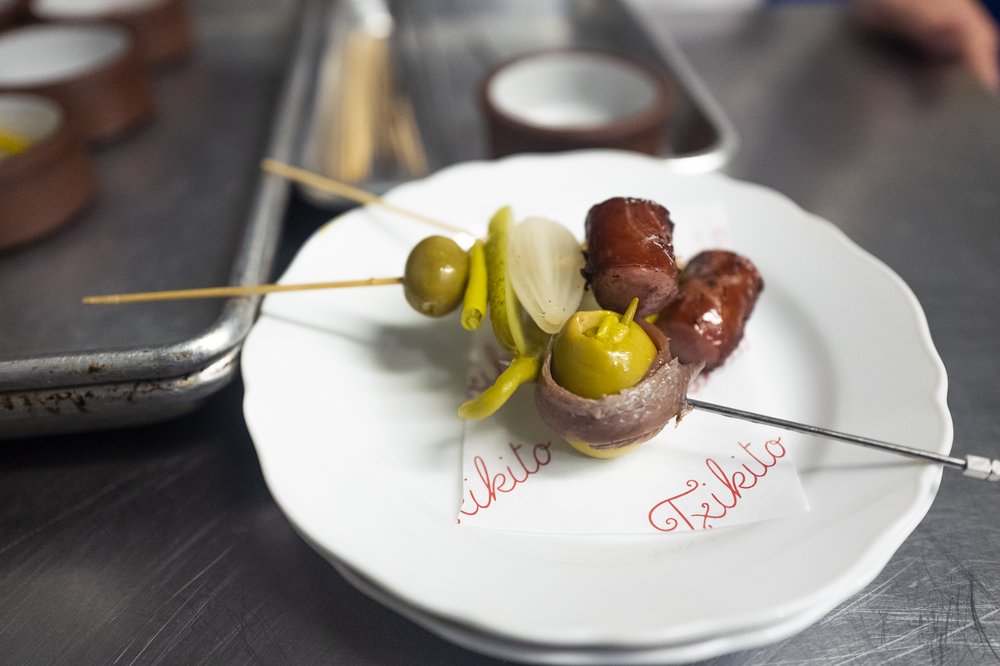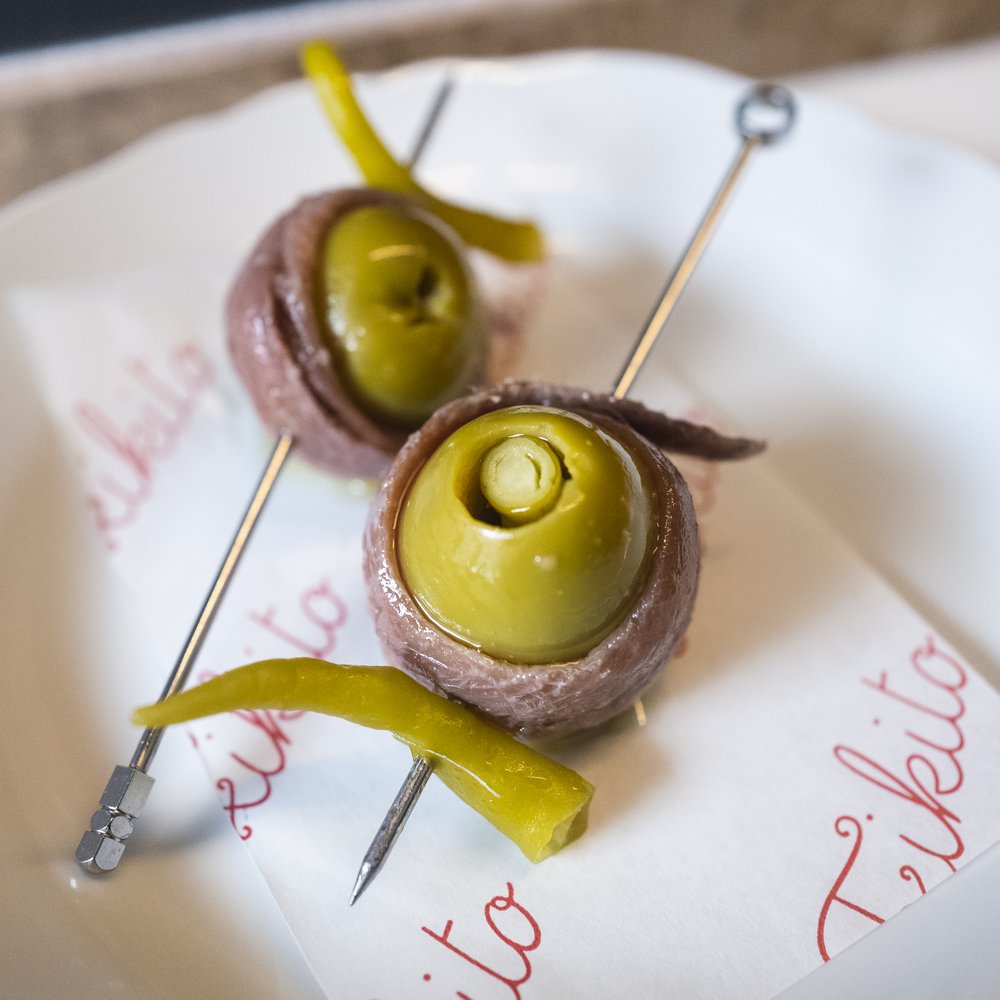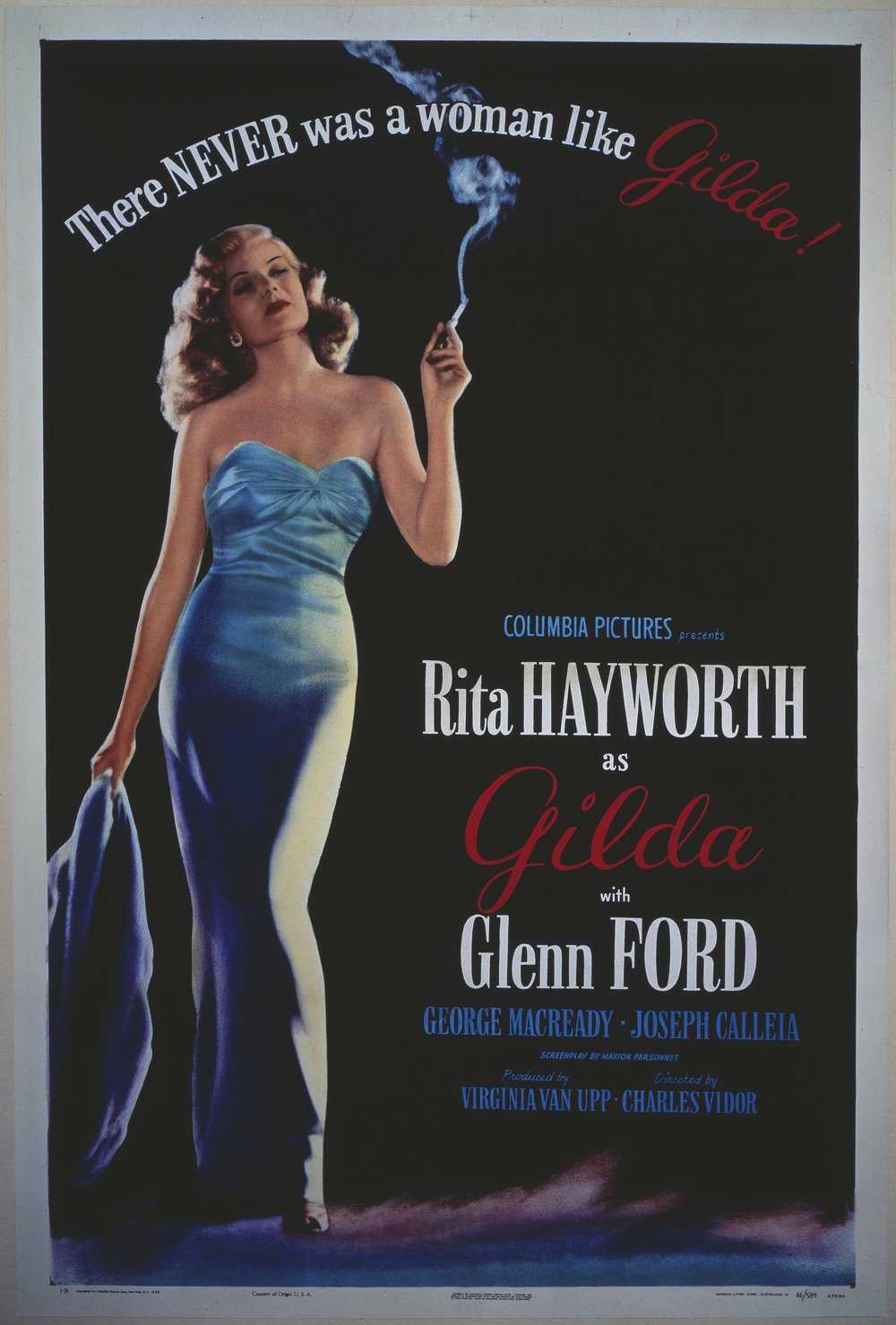What to order at Txikito, a Basque favorite in Chelsea
May 22, 2023, 5:41 p.m.
Txikito's "hot jilda" is an exciting twist on a Basque classic. It’s a dead-serious wink, one you’re welcome to nerd out on or simply pop into your mouth.

The Gilda, and the Hot Jilda: two twists on a Basque classic at Txikito in Chelsea.
Marian Bull is a writer, potter and editor living in Brooklyn. She writes a weekly cooking newsletter called Mess Hall. In our new series called Dishing, Marian will get the story behind a tasty dish at a New York City restaurant.
When you sit down to dinner at Txikito in Chelsea, it’s best to start small, with one perfect bite. This would be the Gilda: a Gordal olive (named for its big fat size) stuffed with a pickled guindilla pepper and wrapped snugly with an anchovy like a toddler in a scarf. Another pepper sits below the olive on a skewer, as if to offer it a stage.
Bite into it fast and you’ll taste the olive before the anchovy, a sharp hit of lush green. Then the fat appears like a bloom, its fishy-sweet richness evening out the wild edges of brine and pickle. It’s an ambitious but easy bite that wants for a glass of vermouth, or maybe some Txakoli, that minerally Basque wine that flows so freely here.

Chefs Alex Raij and Eder Montero have kept the gilda on their menu since opening in 2008. At first. it wasn’t particularly popular: Diners “didn’t like anchovies, because they thought anchovies were those funky things that you got on your pizza,” Raij said.
But having this small but mighty snack on the menu was important, even central, to the restaurant’s mission.
“We had it because we were trying to tell a full story about all the different ways you could eat in the Basque Country,” she said.
Montero grew up in Spain’s Basque country; Raij, who grew up in a Jewish Argentinian family in the midwest, fell in love with the cuisine at the same restaurant where she met Montero after culinary school. They now run two other Spanish restaurants in the city: La Vara and Saint Julivert, which share a block in Cobble Hill.
In the Basque Country, the gilda is one of the Spanish region’s most iconic pintxos, a regionally specific genre of snacky bar foods similar to tapas. At any bar you might find a plate of them set out, alongside another plate of tiny sandwiches, little toasts, or croquetas. They are designed to be eaten quickly, with little fuss, while you sip a beer.
The gilda was originally designed to mimic the body of Rita Hayworth, the star of the 1946 film “Gilda.” Traditionally it comprises three olives stacked for a svelte figure, some wrapped in anchovies, with peppers for arms. The gilda at Txikito, in its current iteration, feels like a sly spin on that origin story: instead of a movie star’s curves, it brings to mind a rotund, sated belly. “The gilda is quietly innovative,” Raij said. “It’s such a perfect example of how things can be more than the sum of their parts — but you don’t have to transform everything until it’s unrecognizable.”

The form, with its recognizable parts, has shifted through the years; in the couple’s 2016 cookbook “The Basque Book,” the Gildas look like Basque dancers, their arms raised in celebration. But Raij insists on maintaining the essence, the integrity, of the gilda. The components have changed only in their quality, as the chefs have been able to find better olives, anchovies, peppers.
“It’s about intimacy, about getting to know the product,” she said. “It’s not like I want to go harvest these things — I want to buy them.”

This is the beauty of the gilda: everything comes from a jar or a tin, everything can sit out on a bar counter for hours while people drink and snack and drink and snack. A chef’s touch appears not just in the quality of the ingredients, but the bite’s design: Raij prefers not just the flavor of the gordal but the ease of the bite in this iteration. In the Basque country, some bars turn their gildas baroque, as if to see how many olives they can stuff on a single skewer.
“I want to be able to fit it all in my mouth without feeling like I’m a fire eater at the carnival,” she said with a laugh, “like I’m swallowing swords or something.”
At Txikito, it’s an exciting introduction to the story of the Basque Country that will unfurl throughout the meal: poached first-of-the-season white asparagus, paper-thin slices of garlic-scented mushroom carpaccio, swordfish belly as silky as foie gras over a smoky blanket of grilled eggplant and porcini mushrooms.
I want to be able to fit it all in my mouth without feeling like I’m a fire eater at the carnival.
Chef Alex Raij
When the restaurant shut down during the pandemic, Raij and Montero took the opportunity to renovate the restaurant, replacing the wood-paneled walls with white paint and updating the bar with a brass top. They also shifted the menu a bit, and introduced their first-ever revision of the gilda. Diners, they thought, had come to understand the original, which meant it was finally time for a riff.

The hot jilda — alliteration, no hard j — began with Raij’s love for the tiny smoked Berkshire sausages she began buying at Asian supermarkets in the city. At Txikito, they appear on a skewer above a short conga line of pickled, briny things: a tiny halved cocktail onion, a halved cornichon, a manzanilla olive, a segment of guindilla. A pair of them arrives on a plate adorned with a tiny dab of spicy S+B mustard.
What’s wrong with you people? Where’s your mustard?
Chef Alex Raij
Like many of the dishes on Txikito’s menu, the hot jilda slyly hides layers of reference inside a quick snack. It’s a riff on the Chicago hot dog, with its signature mustard and pickles. It’s a nod to Japanese cuisine and drinking culture — the “j” is, in part, for Japan, where both Berkshire sausage and S+B mustard are popular. It echoes the original Gilda’s essence: fatty, salty, briny, tangy, a perfect drinking snack. And, Raij explained, “it’s Basque in its junkiness. They love pigs in a blanket, but they eat it without mustard. And I always thought, ‘What’s wrong with you people? Where’s your mustard?’”

It’s a dead-serious wink, one you’re welcome to nerd out on or simply pop into your mouth. “We always get pigeonholed as serving gildas, when we make very serious food,” Raij said. “But I think a very serious gilda […] is important. It’s important to be able to have that pleasure. It’s very specific. It's very Basque.”
A guide to Korean food in Queens, from BBQ to gimbap